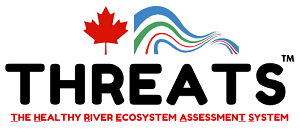For more information about THREATS™, licensing details or participating in a future webinar demonstration, please contact Greenland.THREATS@grnland.com.
We would also welcome opportunities to further develop THREATS™ for specific client needs and with other teams that have complimentary information technology services.

Communitech
The Greenland Group (Greenland) was introduced to Communitech in 2013. This letter is to acknowledge the importance of this proactive joint venture and to indicate our strong interest in future project partnerships with Greenland and other network members.
Greenland is now supporting other joint initiatives with Communitech. These leading-edge information technology partners will include other private sector members with the Communitech network, as well as Ontario government agencies and First Nation communities. These projects are intended to develop commercialized products and services involving the Greenland Group and other Communitech partners and to enable new Canada-wide related collaborations.
Mark, if any your prospective clients or contacts have questions regarding our collaborative efforts to date, ongoing discussions and project leveraging capabilities, the Communitech team would be more than happy to help.
We look forward to our continued strong collaboration with Greenland.
Iain Klugman
CEO
Communitech
February 19, 2015
City of Greater Sudbury
Re: Capreol Downtown Waterfront CIP and Whitson River Waterway Trail
The City of Greater Sudbury has used the services of Greenland International Consulting Ltd. for the design of the Capreol Downtown Waterfront and the design of the Whitson River Waterway Trail.
Greenland delivered both projects on budget and provided consistency in its leadership from the landscape team. This stability in project management meant that we were working with a company who was familiar with the City’s project and consultation processes.
The Capreol Downtown Waterfront improvements were constructed in 2018 in time for the community’s 100th anniversary and incorporated the community’s railway history into the design. Greenland was skilled at integrating the wishes of the community into cohesive and creative designs that provide great connections between the Community’s main street areas and natural features.
Melissa Riou, MCIP, RPP
Senior Planner
Community and Strategic Planning
Growth and Infrastructure Department
City of Greater Sudbury
December 23, 2020
Township of Essa
RE: Township of Essa Engineering Services
On behalf of the Township of Essa (Township), I would like to acknowledge Greenland for its exemplary services to complete the 2022 Community of Angus Infrastructure Master Plan (IMP) Class Environmental Assessment (EA). This legacy Township document developed municipal water and wastewater system models. These calibrated tools were then used by Greenland to develop a sustainable infrastructure planning framework for water and wastewater servicing expansion requirements within the Community of Angus. The project was completed “on-budget and on-time” and cognizant of environmental, technical and socio-economic constraints and opportunities affecting the Township of Essa.
We also appreciate your team’s expertise to provide subsequent model-keeper and development peer review support services. These important responsibilities and overseen by Township staff will help ensure new development approvals proceed in a manner which is consistent with the infrastructure management and expansion needs established by the completed IMP EA project.
Finally, we recognize the professional credentials and attention to detail involvement by your assigned team led by Mr. Josh Maitland, P. Eng.
We look forward to working with Greenland on other projects and serving as a professional reference.
Michael Mikael, P.Eng
Manager of Public Works/Deputy CAO
Township of Essa
October 18, 2023